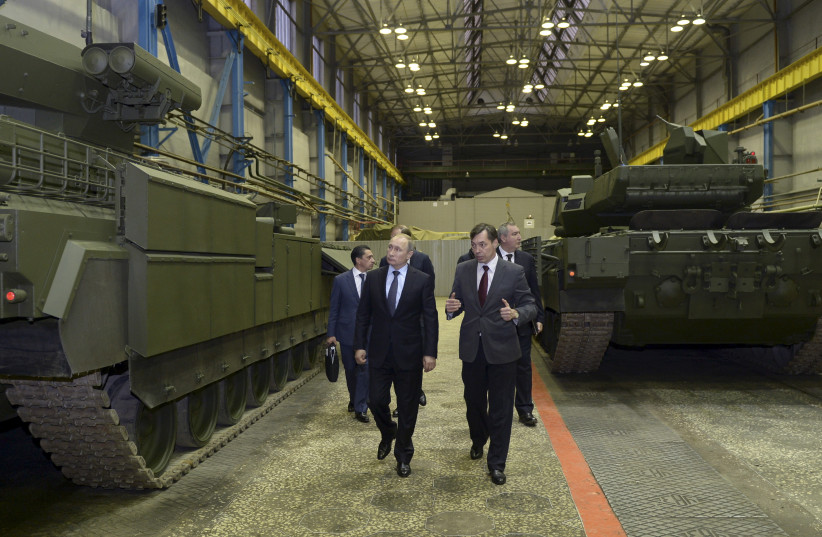Russia fires on Ukrainian forces with new T-14 Armata battle tanks
Russia has begun using its new T-14 Armata battle tanks to fire on Ukrainian positions “but they have not yet participated in direct assault operations,” the RIA state news agency reported on Tuesday, quoting a source close the matter.
RIA said that the tanks have been fitted with extra protection on their flanks and crews have undergone “combat coordination” at training grounds in Ukraine.
The T-14 tank has an unmanned turret, with the crew remotely controlling the armaments from “an isolated armored capsule located in the front of the hull.”
The tanks have a maximum speed on the highway of 80 kilometers (50 miles) per hour, RIA reported.
Reluctant acceptance of the T-14
In January, British military intelligence reported that Russian forces in Ukraine were reluctant to accept the first tranche of the tanks due to their “poor condition.”
 Russian President Vladimir Putin (L) listens to Andrei Terlikov, the head of the Ural Transport Machine Building Design Bureau, as they watch Russian infantry fighting vehicle with the Armata Universal Combat Platform and a T-14 Armata main battle tank in Nizhny Tagil, Russia November 25, 2015. (credit: SPUTNIK/ALEXEI NIKOLSKY/KREMLIN VIA REUTERS)
Russian President Vladimir Putin (L) listens to Andrei Terlikov, the head of the Ural Transport Machine Building Design Bureau, as they watch Russian infantry fighting vehicle with the Armata Universal Combat Platform and a T-14 Armata main battle tank in Nizhny Tagil, Russia November 25, 2015. (credit: SPUTNIK/ALEXEI NIKOLSKY/KREMLIN VIA REUTERS)It also said that any deployment of the T-14 would likely be “a high-risk decision” for Russia, and one taken primarily for propaganda purposes.
“Production is probably only in the low tens, while commanders are unlikely to trust the vehicle in combat,” the British military said.
“Eleven years in development, the program has been dogged with delays, reduction in planned fleet size, and reports of manufacturing problems.”
The Kremlin ordered the production of 2,300 of the tanks – first unveiled in 2015 – by 2020, but this was later stretched to 2025, according to Russian media reports.
The Interfax news agency reported in December 2021, that the state conglomerate Rostec had started production of some 40 tanks, with an anticipated delivery after 2023.





Comments are closed.